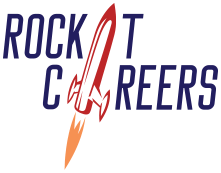This time of year can be beautiful, with its crisp air, leaves changing color, family get-togethers, and Christmas music filling store speakers – all of which can put you in a good mood. However, for job seekers, this season often brings hiring to a near standstill.
During my time as a recruiter, new position requests were rare this time of year. Any openings that did arise were typically to replace someone who had left the company. Moreover, managers were often unavailable for interviews during the weeks surrounding the holidays. While this slowdown provided recruiters with a welcome breather, it can feel like a setback for someone hoping Santa will deliver a new job. Fewer job openings naturally mean lower chances of success. That’s precisely why it’s crucial to use this time as wisely as possible.
Don't Get Down About Things
It’s easy to fall into a spiral of negative emotions when your prospects seem to diminish. Thoughts like, “Will I ever get an offer?” or “What’s wrong with me? Why isn’t anyone calling?” might creep in.
Remember, this slowdown isn’t about you; it’s the nature of the season. It’s an expected lull.
Whenever the clients I work with begin to express these self-doubts, I encourage them to focus on what they can control and to find ways to navigate the things they can’t. We could all benefit from printing the Serenity Prayer and placing it where we’ll see it daily, perhaps on our bathroom mirror, to remind us of the right mindset during challenging times:
God grant me the serenity to accept the things I cannot change, Courage to change the things I can, and Wisdom to know the difference.
So, when new job openings aren’t appearing on your preferred job boards, dedicate your energy to other avenues that can improve your chances of landing a job as quickly as possible.
Focus on Your Marketing Message
Take a critical look at your resume and cover letter. Ensure they clearly communicate the value you will bring to your next employer. I can tell you from experience that most candidates don’t do this effectively.
Unfortunately, for many job seekers, the cover letter has become an afterthought. Too often, they read as if they were copied and pasted from a generic template found in an outdated book. They lack a personal touch, fail to convey the writer’s story or passion for their career, and ultimately don’t motivate a recruiter or hiring manager to reach out for further conversation. While it’s true that cover letters aren’t always mandatory, a well-crafted one can significantly set you apart. Therefore, make it count. If reading your own cover letter doesn’t excite you about your candidacy, how can you expect it to excite the recipient?
When you sit down to work on your cover letter, make sure you clearly demonstrate your enthusiasm for your field and the specific company you’re applying to. Highlight your key selling points. What makes you the ideal candidate for the role? How will you address their needs?
Think you can’t fit all of this onto one page? Trust me, you can. You’d be surprised by how much impactful information you can convey within a couple of concise paragraphs and some well-chosen bullet points. You’ll even have room for your signature!
Once you have a strong foundation for your cover letter, turn your attention to your resume. In my career, over half the resumes I’ve encountered have been significantly lacking. Some appeared to have been thrown together in mere minutes. While I’m sure yours isn’t that bad, it could likely benefit from some refinement if you’re not seeing the desired response rate. This often stems from one of two issues (or sometimes both): poor visual presentation or weak content. Both can severely hinder your chances of securing an interview, which is the resume’s primary goal.
Let’s first address the visual aspect. You want your resume to be both distinctive and professional. Think of it as your personal marketing brochure. Consider times you’ve been in a new place and browsed a rack of brochures, looking for things to do. Which ones caught your eye first? I’d wager they were the ones with an interesting cover – perhaps a captivating image, a unique title, or an eye-catching color.
Many job seekers underestimate the importance of a resume’s appearance. It might seem superficial, but a visually unappealing resume significantly reduces its chances of being read. Don’t blend in with the competition; stand out by paying attention to the visual details. In real estate terms, give your resume some “curb appeal.”
Now, let’s talk about the content. Ensure you’re highlighting your accomplishments, not just your job duties. This is the most frequent mistake I see. How you describe your time at a previous company shouldn’t read like a list of responsibilities from a job description. Instead, it should inform the reader about how you contributed to the company’s success. Showcase the projects you completed, the ways you saved the company time or money, how you increased revenue, and so on.
Furthermore, recruiters and hiring managers aren’t interested in your “career objective.” They want to know about you and what you can do for them. A well-crafted professional summary is an excellent way to help them envision someone with your background on their team. With this in mind, put significant thought into your summary and always keep your audience in mind.
Finally, don’t solely emphasize your technical skills; also highlight the soft skills you bring to an organization. Often, these are even more critical. Are you adept at team building? Can you motivate or persuade others? Are you skilled at time management? If so, list these skills in your skills section and then provide concrete examples throughout the rest of your resume.
Get Out and About
This is an ideal time to incorporate networking into your schedule. If there aren’t many jobs to apply for, how else can you productively use your time? While watching TV, playing video games, or scrolling through social media might be tempting, are these activities truly adding value to your job search?
Reach out to former colleagues and bosses to reconnect. Utilize platforms like LinkedIn and Shapr to further expand your professional network. Explore Meetup and Eventbrite to discover local events where you can meet individuals with similar interests.
Networking offers several benefits. Firstly, you’re meeting and building relationships with people who might either work for a hiring company or know someone who is seeking a candidate with your skills. While it might not yield immediate results, the more people who know and like you, the higher the likelihood of being referred to a great opportunity when one arises. Secondly, it gets you out of the house.
As much as you might love your home, it’s essential to socialize with people outside your immediate family (human or pet). When you’re between jobs, your home can start to feel isolating. It’s not mentally healthy to remain confined. So, metaphorically speaking, grab a spoon and start digging your tunnel to escape and connect with new people.
When I suggest networking to clients, I often encounter resistance. “I’ve tried that, and it never works.” My response is always, “Not with that attitude, it won’t.” You’d be surprised by how willing people are to help if you approach them correctly. The key is to make your interactions with others about them, not just about you. Show genuine interest in their experiences, their personal stories, and their careers. When you’re interested in them, they’ll be more inclined to be interested in you.
After meeting someone new, stay in touch. This is where many people falter. We often desire immediate results, but that’s rarely the case. If your networking strategy is a “one and done” approach, you’ll likely be disappointed. Instead, maintain ongoing conversations with your connections. Just be mindful not to become a nuisance. Reaching out every couple of weeks is generally sufficient to keep you in their thoughts. Share an interesting article you’ve read, mention another networking event you plan to attend, or even share a lighthearted joke. The simple act of staying in contact is what truly matters.
So, there you have it: three actionable steps you can take during this “end-of-year lull” you might be experiencing. Stay positive, ensure your marketing materials are compelling, and build meaningful connections. Hopefully, you’ll land a new job before the year concludes. If not, at least you’ll be well-prepared when hiring activity picks up again!

